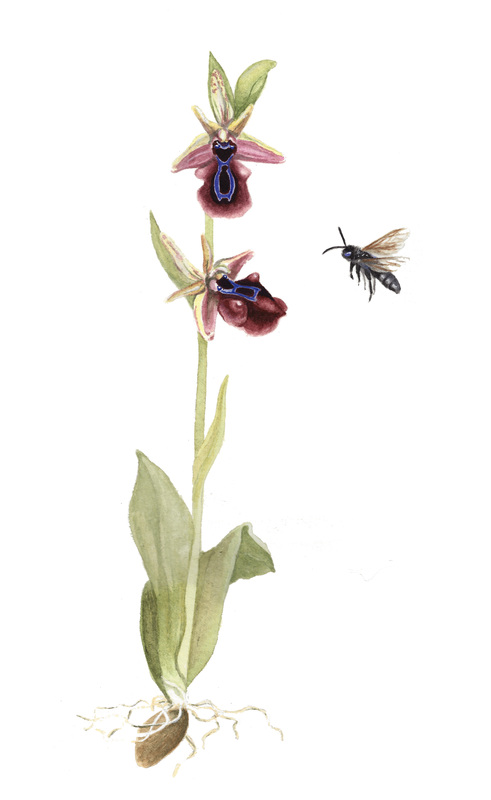|
The short answer: pollination. Orchids have evolved a huge variety of pollination strategies. While most flowering plants use bright colors, fragrant scents, or nectar rewards to attract pollinators, many orchids exploit the pollinator’s need for mates or nesting sites instead. The result is an awesome diversity of flower shapes, colors, patterns, and chemical cues. In a jungle filled with fragrant showy flowers, how do you stand out from the crowd? This week I will highlight just a few of the super cool pollination strategies used by orchids, illustrated by yours truly. 1. Sex AppealMany orchids are sexually deceptive, meaning the flowers mimic female wasps. These flowers are shiny, furry, patterned, and some even have eyespots. Almost all known species of sexually deceptive orchid come from Europe and Australia.
In addition to mimicking the looks of a female wasp, these orchids also produce the chemical compounds that mimic the pheromones used by wasps. Female insects produce chemical signals comprised of blends of volatile compounds. The chemical identity and relative concentration of chemicals act as species-specific signatures. Amazingly, sexually deceptive orchids have evolved to produce compound blends with remarkable similarity to the wasp’s pheromones. The Mediterranean orchid species, Ophrys mammosa, uses both visual and chemical cues to attract the male wasp, Andrena fuscosa. The female’s velvety body with reflective blue pattern and shiny blue eyes are part of the orchid’s flower.
3 Comments
2/23/2014 12:01:49 pm
Wow, that is so awesome! So are wasps and bees always trying to spot and avoid these tricky orchids? That way they have more energy for actual members of the opposite sex?
Reply
I do not really think that they are that weird. I think that they are different, but they are also unique in a way. If you really want to talk about it, then maybe we can do it a lot better. I hope that you can start by going through all the facts that you have. Look at pictures of it, believe me, you will reconsider. They are not weird looking, they are just different from the normal plants that you see.
Reply
Julie Himes
2/23/2014 12:16:06 pm
Not much is know about that, but there is evidence that bees that have been tricked once are less likely to fall for it again. Sounds like a dissertation to me!
Reply
Your comment will be posted after it is approved.
Leave a Reply. |
Categories
All
|
Proudly powered by Weebly






 RSS Feed
RSS Feed